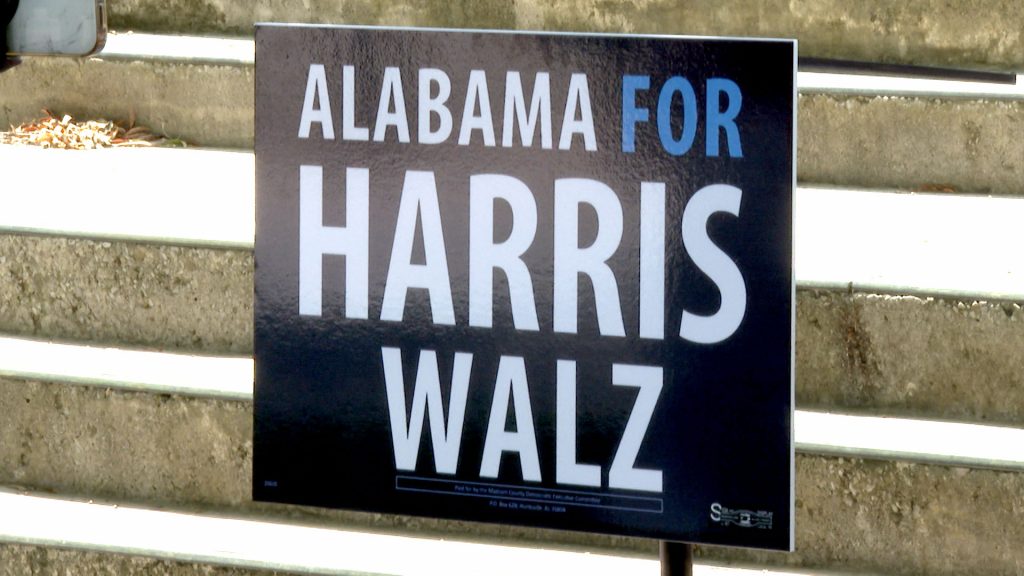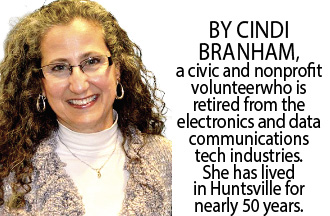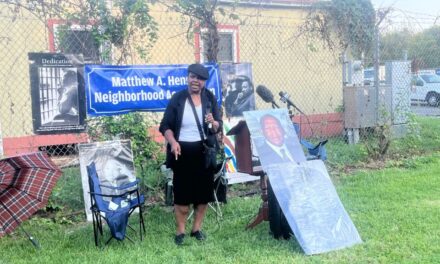
Growth. Traffic. Crowds everywhere you go.
We all – myself included – find ourselves complaining about one or all of these situations that have been thrust upon us because of the growth in Huntsville, Madison and even Triana.
I complain about the traffic every time I drive in it, if only to myself, but to anyone within earshot given the opportunity. It also seems to me that drivers have become more risky and less courteous, which tells me they’re coming here from much larger cities.
Larger cities, like those liberal cities Republicans like to condemn because they are more liberal and populated by of people of color. They’re losing people to places like the Huntsville area, in large part because their jobs moved here.
So, our growth helps us to move closer to defeating the Republican majority in our county. Not the state, but at least in our back yard.
And I’ll take that, because I know it’s the new residents who are taking us towards purple and blue in terms of our political leanings. The local dyed-in-the-wool southern conservatives already here aren’t exactly changing their political leanings. No, it’s the new residents who are making that happen.
Sadly, newcomers are also helping to make up for one inexplicable and troubling fact: A large part of our demographic here in Madison County simply do not vote. They are eligible, they know when elections are held, what they must do to vote and where to do it. But they don’t vote.
Madison County could be deep purple right now if they did. That number is in the 10’s of thousands.
It’s appropriate now for me to now shift gears slightly now and explain some things that have and will affect our election outcomes in Madison County.
I won’t try to explain away the number of candidates on the Democratic ballot in 2024, but it’s important to understand why it’s like that; I’m also not trying to discourage anyone from running for any public office going forward.
Take this as an attempt to inject some reality into the whole election enigma here in Madison County and Alabama.
First, let me explain about the last ballot, because everyone who cares about this sort of thing needs to understand and differentiate some things. First and foremost, that race contains presidential and Congressional openings and several county-wide races. Plus, a lot of judicial races.
Facts: Madison County is shifting towards purple, and we have some blue districts.
These county and legislative districts are laid out (or gerrymandered) by our Republican County Commission and Legislature very purposefully: so that they can win, and we can’t.
We’re getting closer to blue county-wide and may be able to win more of these races in upcoming elections. It’s a lesson in how to weaponize census results against your opposition.
The next major election – 2026 – will tell us a lot about what we can do in Madison County, but state-wide Executive positions, not so much (Governor, Lt, Governor, etc.).
County-wide races: We have one county commission district that’s blue (Commissioner Violet Edwards’ District 6). The rest are red or slowly shifting to purple.
Congressional District 5 is made up of five northeast Alabama counties: Lauderdale, Limestone, Madison, Morgan and most of Jackson. These voters elect our representative to the US Congress. Four of these counties not Madison County are as red as the rest of Alabama.
In rare cases, a person runs to gain name recognition and goes into the race knowing this and having decided what level of effort they’ll put into it. More effort = more name recognition, but there are sacrifices to be made. Less effort = less name recognition.
Guy Sotomayor ran on the Democratic ticket for the County Commission Chair’s seat in 2024 with the intention of gaining name recognition for a later run. An interesting thing happened: Mr. Sotomayor managed to tick votes for him up to the highest level of any Democratic candidate since 2010, proof that we’re getting there.
Showing up isn’t the only way to gain name recognition: money must be raised to pay for advertising the leads to more public exposure.
I’ve witnessed candidates over the years who felt like they could win an election with little to no funds, but the brutal truth is that it even costs a candidate to have volunteers knock on doors of or make calls to their potential voters. Even unpaid volunteers can’t accomplish their work for free.
Judicial races: All but one of these must be filled by an attorney. It’s very hard to convince an attorney that they need to run against a sitting judge. They *currently* can’t win county-wide (again: Numbers!), they may try a case with a judge that they ran against (or any other judge who wants vengeance for them running as a Democrat), and we have to remember that attorneys earn a living with every hour that they work and with the reputations that they build. Running a campaign isn’t just an after-hours thing, and lawyering isn’t a 9-5 job.
Families and financials: In a normal campaign, all non-regular job hours are taken up with learning, planning and executing the campaign. All. Add in attending events and “call-time” (time spent making calls to raise campaign funds), and this leaves little time for family. All this occurs over more than a calendar year.
The next ballot will have many more regional or district and state-wide executive races. Parties and advocacy groups will be recruiting candidates for many of these seats.
Reaching out to them if you’re interested in running will be helpful.
There will be many openings at the municipal levels (city councilors, school board members, etc.) over the next few years, starting in 2025. It doesn’t matter that it’s not in your district: Helping to elect candidates at these levels help to build our bench. These are the people who are suited up and ready to run for higher offices.
Starting a run at the top is usually a recipe for a loss. History proves that fact. Volunteering with a candidate is also an ideal training ground for a future run of your own.
Complaining that there weren’t enough Democrats to vote for on the ballot isn’t fixing anything, and it’s creating discord and disillusionment among our voters. Get ready to run, get ready to donate, get ready to WORK on a campaign.










